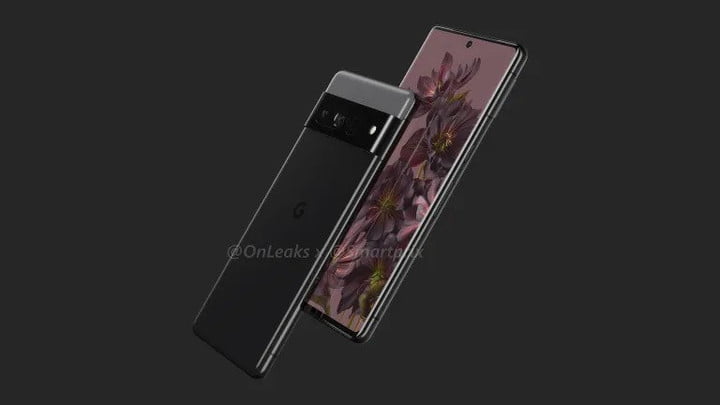With the Pixel 6 and Pixel 6 Pro already having been out for roughly half a year, Google is already preparing the Pixel 7. It will likely launch toward the end of the year and take on Apple’s iPhone 14, as well as Samsung’s Galaxy Z Fold 4 and Flip 4. Detail about the phone have trickled out over the past few months, giving us a somewhat clear look at what to expect. As with all leaks and pre-release information (even from the manufacturer itself), take this with skepticism.
Google Pixel 7 models

As has been standard with all Pixel phones except the 5, Google is expected to launch at least two models of the Pixel 7. These will likely be dubbed the Pixel 7 and Pixel 7 Pro, with the expectation that they share similar designs, but with the Pro model boasting a better display, larger batteries, and an extra camera.
Google Pixel 7 Design
The Google Pixel 7 is expected to inherit a lot of what Google built intp the Pixel 6. From the renders, it looks almost indistinguishable from the Pixel 6, with the exception of slight changes to the camera visor. This means the visor-like rear camera is expected to remain a design fixture, as is the centered hole-punch camera at the front.
For a company that moved away from a distinct design with the Pixel 4 and 5 to take ownership of such a striking look can only be a good thing for brand recognition. The Pixel 6’s design truly stands apart from other smartphones. Iterating on it means carving out a look. It’ll be a good choice, if Google can keep it going.
Google Pixel 7 specs
Google is expected to be making some changes to the Pixel 7 and 7 Pro. Notably, the screen size of the Pixel 7 is coming down to 6.2 inches. The Pixel 7 Pro is expected to go up a little and ship with a 6.8-inch display.
Inside, the company is expected to continue eschewing Qualcomm Snapdragon processors and keep working with its own in-house Tensor chips. There are reports of a Tensor 2 chip in the works, and while that would undoubtedly be more powerful, power is not the area where Google’s first Tensor floundered. The company’s choice of modem resulted in an inconsistent signal performance that has led to a deleterious effect on the battery as shown by battery tests run by GSMArena. Hopefully, the second-generation Tensor chip fares a bit better,
Google Pixel 7 cameras
Google’s Pixel 7 and Pixel 7 Pro are expected to keep the same camera layout and specs of the Pixel 6 and 6 Pro. This means the Pixel 6 will have a 50-megapixel main camera and a 12MP ultrawide camera, while the Pixel 7 Pro will add a 48MP telephoto lens to the layout.
Google has done this before with the Pixel 3, Pixel 4, and Pixel 5 all sporting the same camera. To be clear, the hardware is good and the camera experience of both phones is superlative. The reasoning here could be the same, with Google focusing on getting the most use of the camera hardware before moving on to newer ones.
Google Pixel 7 pricing and availability

Google’s Pixel 7 is expected to break cover at the company’s annual #MadebyGoogle event in October. As for pricing, the Pixel 6 and Pixel 6 Pro were aggressively priced, leading to Google making gains in the premium market (at least in North America). It would be wiser for the company to stick with the $600 and $900 starting prices, rather than raising the prices to compete with the likes of Apple and Samsung, both of whom still retain substantial mindshare and ecosystem advantages over Google’s products.
Anything else?

Other Google Pixel-branded products expected to arrived this year are the Pixel Notepad, Pixel Watch, and Pixel 6a. The 6a is first on the slate, with Google expected to release the Pixel 6a before the Pixel 7, perhaps even at Google I/O in May. This would serve as a bridge between the Pixel 6 and Pixel 7, and be Google’s first phone release in 2022. It’ll look a lot like the Pixel 6 and 7, according to renders, but the newest Tensor 2 processor and far more powerful cameras and internals would go a long way toward setting it apart from the more expensive models.
The Pixel Notepad and Pixel Watch are more nebulous, with the former being more anticipated but lacking a solid release timeline, while the latter is expected to be announced at or around Google I/O.



